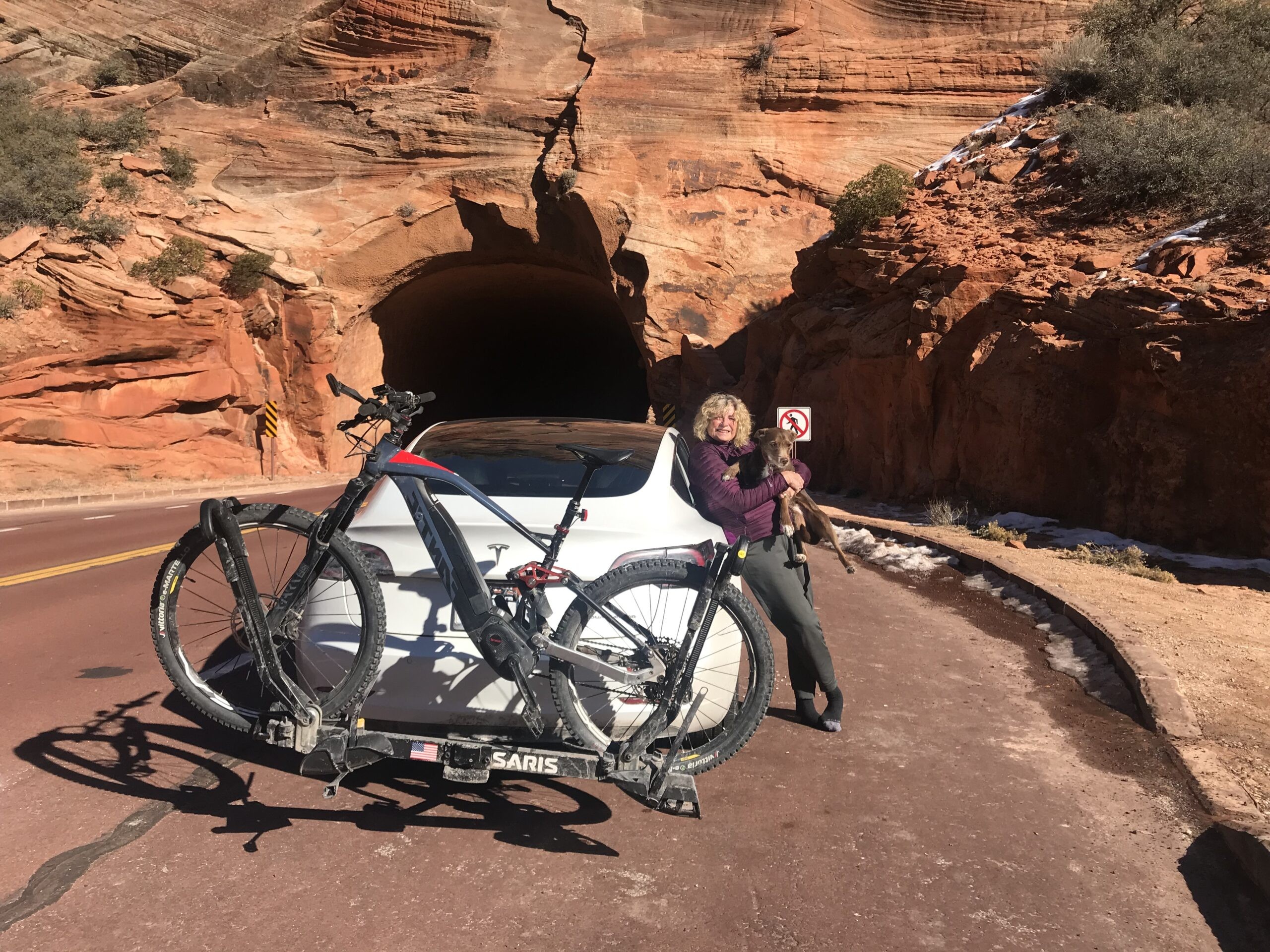October 21, 2024 marks the 5th anniversary of owning our dual-motor 2019 Tesla Model 3 Long Range. Having driven approximately 138,856 miles as of October 14, 2024, it’s time to reflect on the maintenance and repair costs incurred over these years. This review provides a real-world perspective on the long-term ownership experience of a 2019 Tesla Model 3 Long Range, complementing other reviews like Zach Shahan’s 5-year review of his Model 3 Standard Range Plus. Please note that this cost analysis excludes fuel, interest, insurance, and resale value considerations.
5 Years and 138,000 Miles Later: Appearance and Interior
The aesthetic appeal of the 2019 Tesla Model 3 Long Range remains strong, though showing some signs of wear after five years. The front fascia, in particular, retains its sleek design, enhanced by my decision to forgo a front license plate. However, the flat white surface is prone to accumulating bug splatter, especially in Wisconsin’s humid climate. Small paint chips, likely from bug impacts, are also visible. While a front-end bra could have prevented this, it would have detracted from the car’s appearance. A relatively inexpensive front fascia replacement could restore the car’s pristine front look. Inside, the standard black vegan leather seats have held up remarkably well, showing no signs of wear and tear. A minor issue is the front console USB charging ports, which have ceased functioning. Thankfully, the rear USB ports are still operational, providing charging for devices. Repairing the front USB ports is a minor service item I plan to address in the future.
The Thrill Remains: Driving Experience and Full Self Driving
My enthusiasm for green technology and electric vehicles, especially Teslas, remains undiminished. Despite Elon Musk’s controversial actions, the driving experience of my 2019 Tesla Model 3 Long Range continues to be a source of joy. The exhilarating acceleration is a primary highlight. Furthermore, the addition of “Full Self Driving” (FSD) capability has transformed the driving experience. FSD, now on Supervised V12.5, offers near-autonomous driving under ideal conditions, adeptly navigating to destinations entered into the navigation system. While FSD performs impressively, occasional interventions are still necessary to prevent potential accidents, particularly in situations requiring assertive driving at stop signs or in heavy traffic. Despite these minor shortcomings, FSD has seen significant improvements over the past two years, including better navigation of roundabouts, obstacle avoidance, responsiveness to construction zones, and speed bump detection. However, it’s important to note that FSD still does not recognize school zone speed limits or flashing school zone lights.
Battery Health and Range Degradation After 5 Years
Electric vehicles are inherently less complex than internal combustion engine (ICE) cars, primarily due to the simpler nature of electric motors compared to combustion engines. EVs eliminate complex transmissions, exhaust systems, and cooling systems common in ICE vehicles. However, a key concern for EV owners is battery longevity and potential replacement costs. To maximize battery life, I have consistently followed best practices, rarely charging above 80% and predominantly utilizing Level 2 charging in my garage. Despite this, I have frequently used Tesla’s Supercharger network for long journeys. The original EPA range for my 2019 Tesla Model 3 Long Range was 310 miles. Currently, at a 100% charge limit, the estimated range is 271 miles. This indicates a battery degradation of approximately 12.5% over 138,856 miles. While battery degradation is expected, the rate of 4.5% in the last 26,856 miles is slightly higher than anticipated, as I had hoped degradation would slow down at higher mileage.
The battery and drive system warranty on my 2019 Tesla Model 3 Long Range expired at 130,000 miles, meaning future repairs will be out-of-pocket. While home charging with solar panels in Utah provides virtually free driving, Supercharger use on road trips incurs electricity costs comparable to gasoline. Fortunately, reader referrals have provided free Supercharging for the past year. However, the weight of the EV battery and the car’s rapid acceleration contribute to faster tire wear compared to ICE vehicles, representing an increased maintenance cost for EVs.
Maintenance and Repair Costs Over 5 Years – The Breakdown
Over approximately 138,856 miles, the total expenditure on tires and out-of-warranty repairs for my 2019 Tesla Model 3 Long Range has been $5,290.15. To manage costs, I opted for economy tires for three out of four sets. However, an unexpected flat tire incident necessitated purchasing a more expensive set of tires at short notice, increasing the overall tire expense. Despite the higher-than-expected cost, it is likely comparable to the cumulative expenses of owning an ICE car, considering repairs, tires, oil changes, emission inspections, brakes, and fuel costs. The long-term savings for EVs are anticipated to be significant, avoiding major ICE car maintenance like timing belt replacements, muffler and exhaust system repairs, and eventual engine or transmission overhauls. I am optimistic about driving my Tesla Model 3 for over 500,000 miles, anticipating the electric drivetrain and battery to last for this duration.
 Tesla Model 3 with e-bike at Zion National Park, Utah, showcasing EV lifestyle and outdoor adventures.
Tesla Model 3 with e-bike at Zion National Park, Utah, showcasing EV lifestyle and outdoor adventures.
Figure 1: The 2019 Tesla Model 3 Long Range pictured with an e-bike in Zion National Park, Utah, highlighting the vehicle’s versatility for travel and recreation.
The detailed breakdown of service costs for my 2019 Tesla Model 3 Long Range up to 138,856 miles is as follows. Notably, no new service expenses have been incurred since the 90,000-mile mark. Using the Tesla app, I conveniently retrieved dates, mileage, and costs for repairs within the past two years. The following list details the out-of-warranty repairs:
Tire Replacements
Four sets of tires have been purchased. The fourth set is projected to last until 150,000 miles, although winter tire considerations might necessitate an earlier replacement.
- Set 1: $578.93
- Set 2: $565.44
- Set 3: $1252.23
- Set 4: $644.15
- Total Tire Cost: $3,040.15
Cabin Air Filter and Windshield Wipers
- Cabin air filter replacement: $29.00 (mobile service installation included)
- Windshield wiper replacement: $23.00 (DIY possible)
Wheel Alignments and Suspension
- 4-wheel alignments (x3): ~$280 + $90.75 = $370.75
- Resealed right front upper control arm ball joint: $49.00
Superbottle and PTC Heater Replacement
- Superbottle (battery/drive system cooling valve) replacement: $672.75
- PTC/cabin heater replacement: $1,148.00
Floor Mats and 12V Battery
- Rubber floor mats (Amazon): $49.00
Note: The 2019 Tesla Model 3 Long Range utilizes a traditional 12-volt lead-acid battery for system startup. While mine is still functioning, proactive replacement might be considered as these batteries typically last 4-5 years. Newer Teslas are equipped with longer-lasting lithium-ion 12V batteries. [Editor’s Note: Tesla provides an on-screen notification when the 12V battery requires replacement.]
Repair/Maintenance Cost Summation
- Tires: $3,040.15
- Wheel Alignments: $370.75
- Superbottle Replacement: $672.75
- PTC Heater Replacement: $1,148.00
- Cabin Air Filter: $29.00
- Windshield Wipers: $23.00
- Floor Mats: $49.00
- Windshield Wiper Fluid: $10.00
- TOTAL: $5,290.15
Total Cost of Ownership: Beyond Repairs (Insurance and Registration)
Beyond maintenance and repairs, other ownership costs include annual registration and insurance. In Utah, the annual registration fee for my 2019 Tesla Model 3 Long Range is $318.25, which includes an electric vehicle fee of $188 to compensate for the lack of gasoline tax contribution.
The Elephant in the Room: High Insurance Premiums
Reviewing my Bear River Insurance policy revealed a surprisingly high annual premium of $3,089. Over five years, insurance costs could reach approximately $15,000. This significantly surpasses the $5,200 spent on repairs and tires. This highlights that while EVs may offer savings in fuel and maintenance, insurance costs can be a substantial factor in the overall cost of ownership.
In conclusion, my 5-year experience with the 2019 Tesla Model 3 Long Range has been overwhelmingly positive. The maintenance costs have been reasonable, and the driving experience remains exceptional. However, potential buyers should be aware of potentially high insurance premiums, which can impact the overall cost-effectiveness of EV ownership. Please share your Tesla ownership experiences and repair costs in the comments below.
Tesla Referral Program: If you are considering purchasing a new Tesla, please use my referral link: https://ts.la/arthur73734 for potential savings and benefits. Using this link may provide you with $500 off a Model 3 or Y, or $1,000 off a Model S or X, along with 3 months of Full Self-Driving (Supervised). Remember to exercise caution and be ready to intervene when using FSD.
Support independent cleantech journalism by contributing to CleanTechnica. For news tips, advertising inquiries, or podcast guest suggestions, please contact us. Sign up for our daily or weekly cleantech newsletters.
